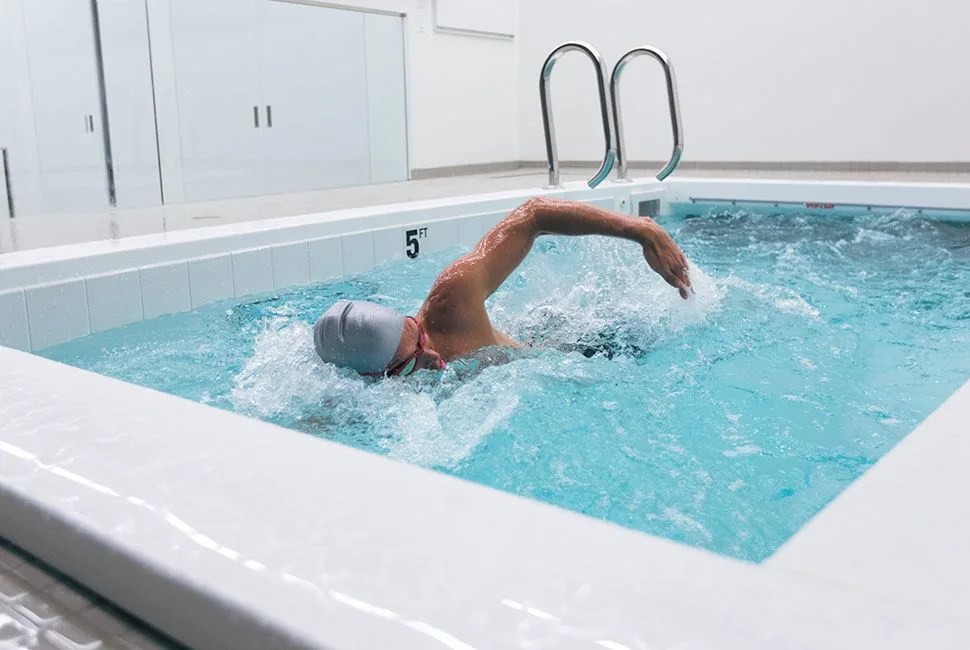At the entrance to Whitespace, in the basement of Lululemon’s headquarters in Vancouver, there are floor-to-ceiling frosted glass windows that turn clear as you approach, revealing an open layout laboratory rife with 3D printers, laser cutters, fusing machines, a massive h/p/cosmos treadmill, temperature simulation room, endless pool, stationary bike, heat sensing cameras and more, all played with by scientists, engineers, designers and technologists. It’s like entering into Q’s lab, for athletic clothes. With the frosted glass, the emphasis that no pictures may be taken, and the card-scanning, locked door, it feels very classified.
“That’s bullshit actually,” Dr. Tom Waller, Director of Innovation and Vice President of Whitespace, says. “It’s just used to impress people.”
Waller is a design type. He’s dressed in all black: button-down, pants, Nike Free shoes, Garmin watch — and he has a light 5 o’clock shadow. He’s fit, a triathlete (he’s doing an Ironman next year, and has done several half Ironmans), and has a clear British accent, somehow fitting in light of the surrounding laboratory (luh-bor-uh-tuh-ree, as Waller says it). And he makes obvious quickly that he’s a clear-glass, not frosted-glass, type of guy. In describing his design philosophy, he starts with what’s wrong with most philosophies. “R&D and Innovation seemed to be in the corner of everyone’s organization, rather than at the center,” he says. “My philosophy is about really pulling the walls down.”
Waller likes for things get complicated — things have to get complicated to truly understand them.
Easy to say, here. Inside these glass walls of the Whitespace, Waller and his R&D team of 30 people have free rein to research how clothes impact physical performance and the mental and emotional perception of athletic ability.
“The problem of understanding a person’s body is not that hard,” he says. “Looking at someone’s physiology, looking at someone’s shape, looking at the way someone moves, that’s pretty mature in the world. A lot of people have been doing that for a long time.” That’s not what fascinates Waller. “That still doesn’t really enable you as a person. To be fully enabled is to understand the psychological limit.” For that, Waller is talking about physical, mental and emotional inhibitors to full potential.
This is the tricky space. This is where Waller starts discussing things like “what does light feel like”; or how athletes are affected by “end peak,” or the greater value we give to things that happen at the conclusion of any experience; or how people’s preferences are influenced by experiences they’ve had and their perception of the world. If it all sounds metaphysical, it is — intentionally.

